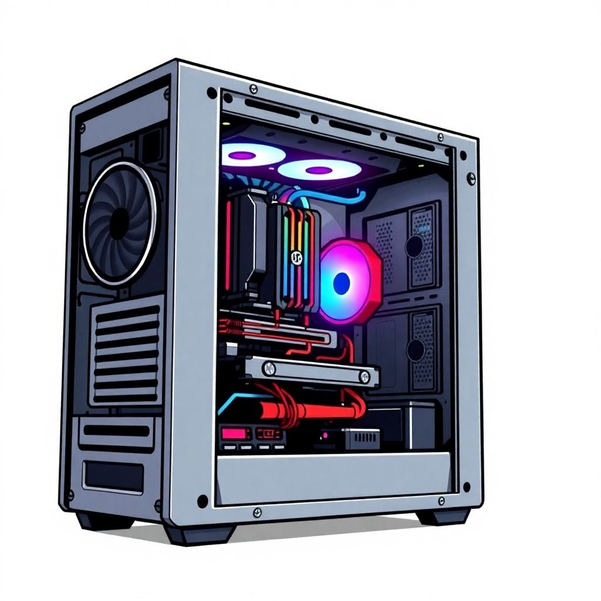Unleashing the full potential of personal computing has never been easier. The ability to build your own PC allows for complete customization, ensuring that your machine meets your specific needs and preferences.
The Rise of PC Building: Why Now?
The PC gaming market has exploded in recent years. In 2023, the global gaming market surpassed $200 billion, with a notable portion dedicated to PC gaming. Custom PC sales have also seen impressive growth, reflecting a shift toward personalized and high-performance machines. According to recent statistics, around 30% of gamers prefer building PCs to buying pre-built systems, highlighting this trend.
The Benefits of Building Your Own PC: Cost Savings, Customization, and Performance
Builder your own PC can save money compared to buying a pre-built system. You can select components that fit your budget and needs, avoiding unnecessary features. Customization is another key benefit. You can upgrade parts as needed, ensuring your PC stays relevant. Performance also tends to be higher, as you can choose the best parts for gaming or productivity.
What This Guide Will Cover: A Roadmap to Your Perfect Build
This guide will walk you through choosing components, selecting the right graphics card, deciding on storage solutions, understanding power supplies, and assembling your new PC. Let’s dive in!
Choosing the Right Components: The Foundation of Your PC
The CPU: The Brain of Your System
The Central Processing Unit (CPU) is essential for your PC's performance. Intel and AMD dominate the market. Intel’s Core i5-12600K is a high-end option, boasting impressive speeds and core counts. If you’re on a budget, consider the AMD Ryzen 5 5600G, which still delivers great performance at a lower price.
The Motherboard: Connecting Everything
The motherboard connects all components and must be compatible with your CPU. Important factors include chipset, which affects features, and form factor, which determines case size. ASUS and MSI are two reputable manufacturers that offer a range of options.
RAM: Fueling Performance
RAM is crucial for multitasking and gaming performance. There are different types, such as DDR4 and DDR5, with speeds ranging from 2400 MHz to over 6000 MHz. Upgrading from 8GB to 16GB can significantly improve gaming performance, especially in memory-intensive titles.
Selecting the Perfect Graphics Card: Visual Powerhouse
GPU Power: Understanding Performance Metrics
The graphics processing unit (GPU) is vital for gaming. Key performance metrics include frame rate, resolution, and features like ray tracing and DLSS. Benchmarks from sources like Tom’s Hardware can help you compare performance across different cards.
Choosing a GPU: Budget vs. High-End
When selecting a GPU, consider your budget and performance needs. The NVIDIA GeForce RTX 3060 is an excellent mid-range option, while the RTX 3080 offers high-end capabilities for serious gamers. Use price comparison sites like PCPartPicker to find the best deals.
Overclocking Your GPU
Overclocking can boost performance but carries risks. It may lead to overheating or instability if not done carefully. YouTube channels like Linus Tech Tips offer great tutorials on how to do this safely.
Storage Solutions: Speed and Capacity
SSD vs. HDD: The Storage Showdown
Solid State Drives (SSDs) are faster than Hard Disk Drives (HDDs). Typical SSD speeds range from 500 MB/s to over 7000 MB/s, compared to HDDs at around 100 MB/s. Investing in an SSD can greatly reduce loading times in games and applications.
Choosing the Right Storage Capacity
Consider your storage needs based on usage. Gamers may need 1TB or more, while casual users might be fine with 500GB. Video editors often require 2TB or more to accommodate large projects.
Optimizing Storage Performance
To keep your storage running smoothly, practices like disk cleanup and defragmentation are important. Windows includes built-in tools for these tasks

